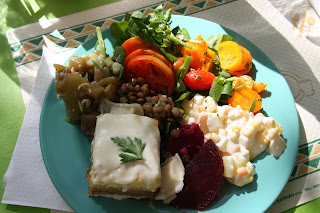
The next morning is a frightfully early start, after we ended our night with more wine in town. Amanda and I had stupidly booked ourselves for some hiking – Mendoza-style - and it was apparently essential that we wait for at least an hour before moving from the hostel, precious sleep-time wasted. Our mission for the day was the Cerro de la Virgen, although the name meant nothing to us until we saw it rise up before us in the car to Cachueta.
Maxiaventura’s HQ, a kirky cabin erected out of pine wood and string, holding only a chair and computer inside, looked like it belonged to a boys’ clubhouse or scout troop - not a safe, secure adventure tours company. And it certainly paled against the nearby hotel, touting the virtues of its hot springs, and other tour establishments we had passed along the way. Make sure you check the ropes, was all I kept thinking to myself.
Thankfully Amanda had reminded me to replace my near-permanent flip-flops with a pair of sneakers, because the hike to the top was nothing short of challenging, and a sombre reminder why smoking is never good – no matter how much wine you consume. A few slides down the gravel, which our guide Daniel happily reminded us equalled one round each at the bar, and we made it to the abseiling spot, where we could finally rest easy, hanging parallel to a 20m drop. Nice.
A much needed break then arrived, with lunch at the bottom of the second drop, which was the epitome of basic. Some fruit, a loaf of bread, cheese and ham - so Argentinian. At least I wasn’t the 18 year old from Buenos Aires who was instructed to make our sandwiches while Daniel went to set up the ropes for our rock-climb.
It was about here, that Amanda and I started to flake, and were not fazed at all when we were told that the rock-face was too busy to climb now, and that we would head to rafting instead. We were already dreaming of our next round of liqueurs and how nice it would be in the water with them in hand.
Making our way to the mouth of the rapids, a popular camping and picnicking spot for locals, we of course fell asleep, happy to have a rest from all the activity. But one dip of our feet into the icy water and we soon woke up and lost all aspirations about going swimming. It was positively freezing! To make matters worse, our cowboy hosts were intent on not only soaking the competitor companies’ rafts, but also filling our own with icy water by making us perform tricks and chants. What’s that about tourists being monkeys?
Fortunately though, you are never to far from a bar in South America, and the little store next door to HQ was also home to some strong Andes ‘red’ beer. It's warming stout was the most soothing remedy to our overworked bodies.






